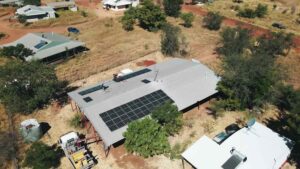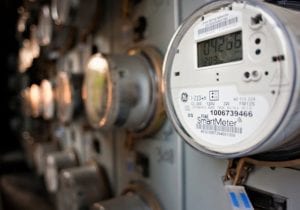The federal Labor government has announced a new $2 billion hydrogen fund designed to support new renewable hydrogen projects as part of a $4 billion green energy package in the federal budget.
The federal government says the new hydrogen fund will provide “production credits” help bridge the commercial gap for early projects and put Australia on course for up to a gigawatt of electrolyser capacity by 2030, through two to three flagship projects.
“This investment will build critical domestic experience and expertise, and position Australia to take advantage of the immense jobs and investment potential of the technology,” the government says.
The package is likely designed to also respond to the initiatives happening overseas, particularly in the US where the Inflation Reduction Act is providing powerful incentives to invest in green hydrogen projects in that country. The EU is following suit with its own package.
“Hydrogen power means Wollongong, Gladstone and Whyalla, can make and export everything from renewable energy to green steel,” treasurer Jim Chalmers said in his budget speech. He later said the credits would be allocated via a competitive process.
“Seizing these kinds of industrial and economic opportunities will be the biggest driver and determinant of our future prosperity.”
See also:
Labor’s budget is good for climate and renewables – and great for the gas cartel
“It’s a start:” Forrest welcomes Australia’s $2 billion hydrogen response to US plan
“Australia’s first electrification budget:” How the promised billions might be used
The other big ticket items in the federal budget are a $1.6 billion energy savings plan designed to address Australia’s woefully inefficient housing stock, which leads to higher heating and cooling bills.
The fund will support energy upgrades, including double glazing, to try and boost Australia’s global ranking on energy use per capita – it is currently rated 58th out of 63 countries. Lifting an average house from a 1-star rating to a 3-star rating can cut household energy bills by 30 per cent.
Of this money, $1 billion will be distributed by the Clean Energy Finance Corporation to support lower cost lending for “battery-ready solar PV, modern appliances and other improvements”. More than 110,000 homes are targeted.
A further $300 million will support upgrades to social housing, targeting another 60,000 properties. Another $310 million in tax relief will be provided to small businesses to help them electrify and become more efficient in terms of energy use.
The Labor government says the budget also includes funds for the new Capacity Investment Mechanism which will support auctions for new storage capacity to be managed by the states. But it refuses to reveal how much has been allocate due to “commercial” sensitivities.
Federal energy minister Chris Bowen said last week that the first auctions will be rolled out by certain states before the end of the year. It has not yet been revealed which states and how much capacity will be sought in the first rounds.
Among other measures, some $38.2 million is allocated for a Guarantee of Origin scheme that will certify renewable energy and track and verify emissions from clean energy products – in particular hydrogen.
Another $83 million has been allocated to the new Net Zero Transition Authority that was announced late last week.
Another $5.6 million is allocated for further work before the end of 2023 on the best ways to leverage Australia’s competitive strengths in renewable energy, critical minerals and highly skilled workforce to accelerate our other clean industrial and manufacturing capabilities.
The Powering the Regions Fund will allocate $600 million to the Safeguard Transformation Stream to assist trade-exposed safeguard facilities, $400 million to the Critical Inputs to Clean Energy Industries stream supporting primary steel, cement, lime, aluminium and alumina industries; and $400 million to the Industrial Transformation Stream to be administered by ARENA, supporting regional industrial facilities, including rail and aviation, and helping support new clean energy industries.
Budget is good for climate and renewables – and great for the gas cartel
“It’s a start:” Forrest welcomes Australia’s $2 billion hydrogen response to US plan
“Australia’s first electrification budget:” How the promised billions might be used











